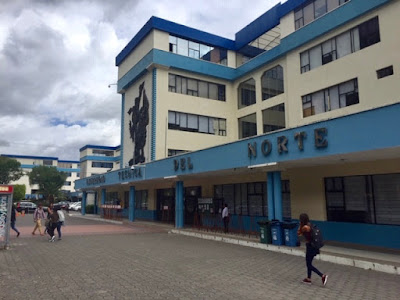 For the past eight months, I’ve been teaching various classes on lesson planning, unit planning, classroom management and how to integrate more dynamic speaking, listening, reading and writing activities into their future English classrooms. My work with these college students and future English Teachers is really fulfilling and my classes with the different cohort groups keep me very busy.
For the past eight months, I’ve been teaching various classes on lesson planning, unit planning, classroom management and how to integrate more dynamic speaking, listening, reading and writing activities into their future English classrooms. My work with these college students and future English Teachers is really fulfilling and my classes with the different cohort groups keep me very busy.
| The future teachers of Ecuador |
 |
| This is Mikayla, another local Peace Corps Volunteer, who works in Health Education and promotes efforts in gender equality. |
|
There are plants everywhere in this school. I see both students and teachers tending to them daily. I’ve also spotted an herb garden in the back so I hope to work with the 5th grade classes next year during their unit on Medicinal Plants. |
| This is the student “snack bar”. Since this school is so small, local “lunch ladies” are contracted to bring in huge pots and trays of food to sell during the morning snack break. Usually they have a variety of bread and cheese sandwiches, rice with beans or hotdogs, jello, chips, fruit, or cakes. The students take turns helping to sell the food as well. |
I brought the idea of personal whiteboards to this school, and Ernesto’s high school students have really seen the power and fun in this learning tool. Here, the 10th graders are demonstrating their knowledge of the Present Progressive Tense in English. I’m helping Ernesto think about how to engage “all of his students, all the time” with more whole class and partner speaking activities.
 |
| Here are my 8th grade students practicing how to make a turn at the corner of a city street. Since it was dance practice day, the students didn’t have to wear their uniforms. |
 |
| 5th graders David, Tatyana and Franklin really loved the dancing! |
math, science, history, and language courses to the high school students.
Then we have music, art, PE and the English teachers, too.




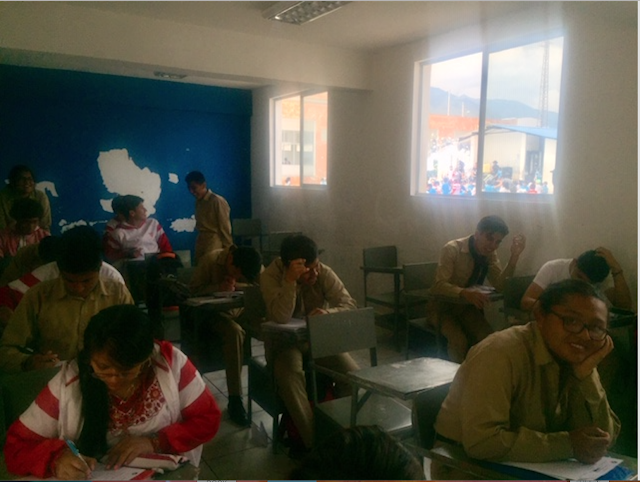




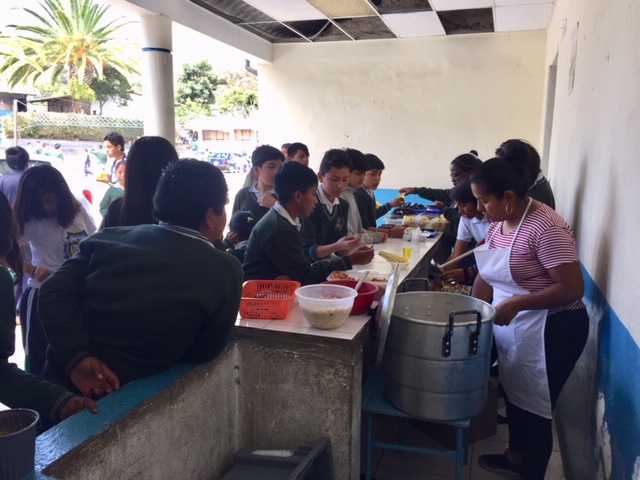

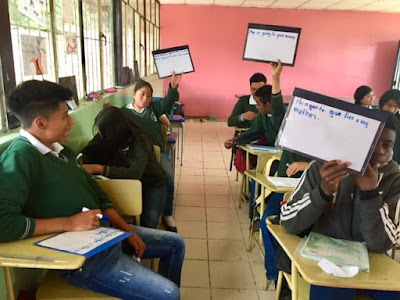

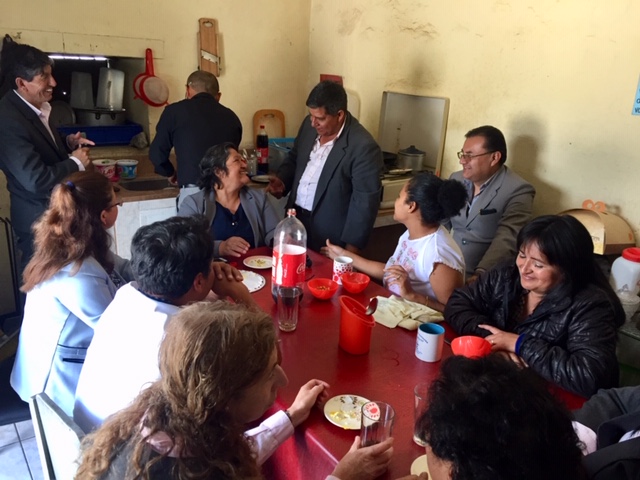



Ms. Long
Amazing work, Becky! Indeed, you are inspiring others with new ideas and practices. So glad to hear you are enjoying Ecuador and living life to fullest. I enjoy reading and seeing photos about your experiences. Thank you for sharing. Hugs to you!!!